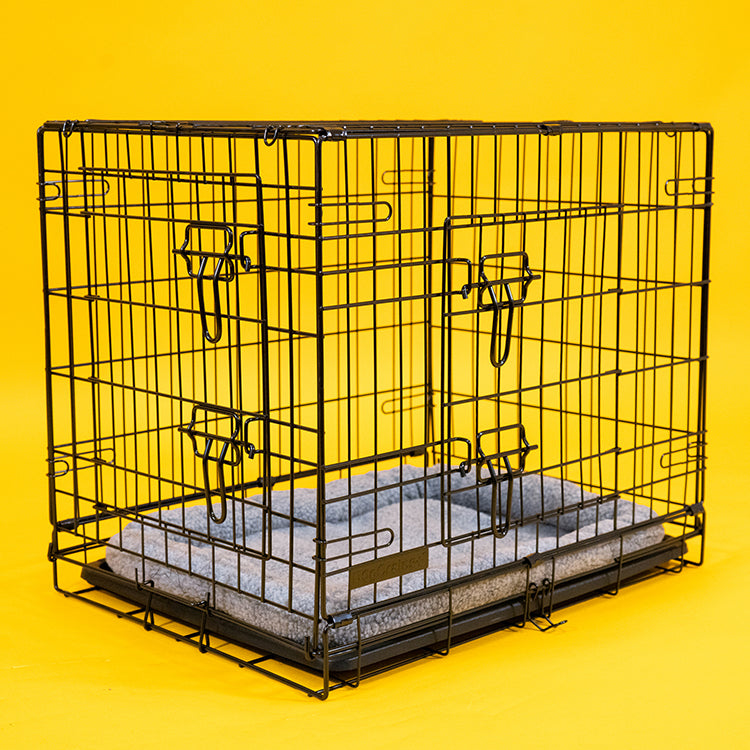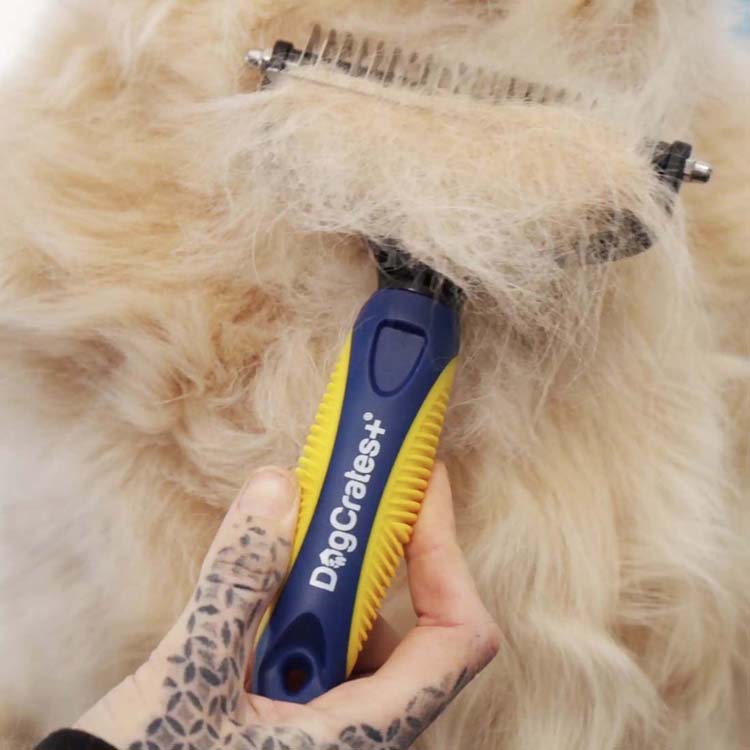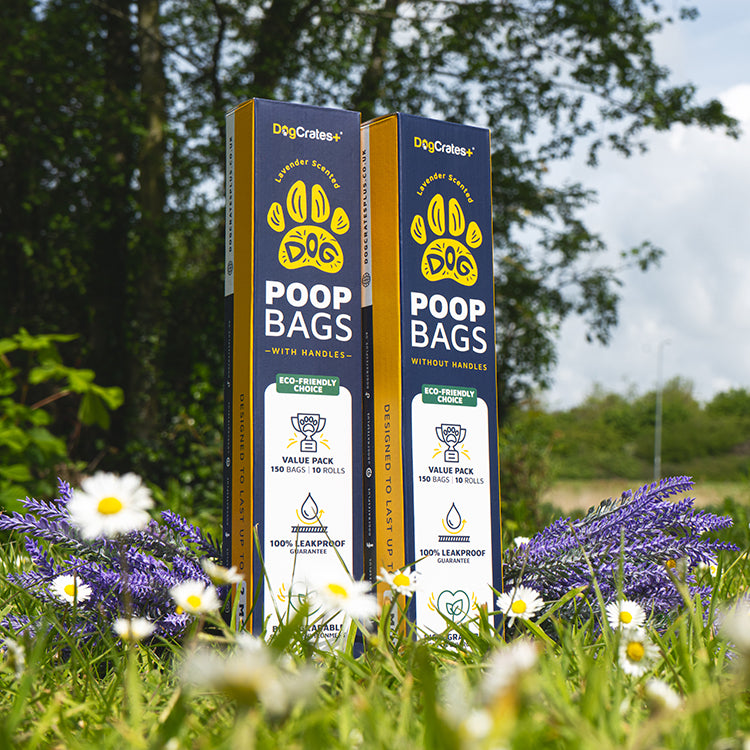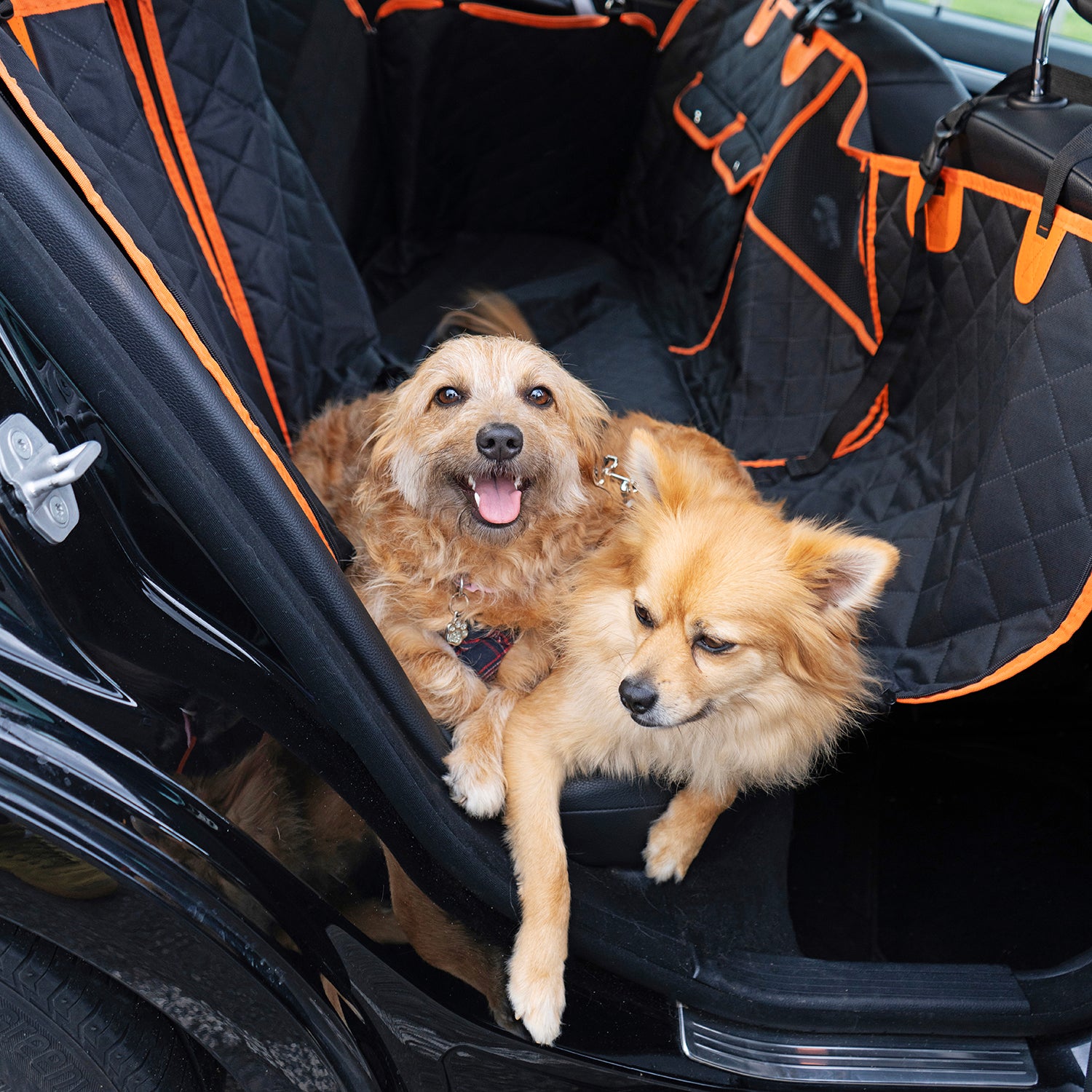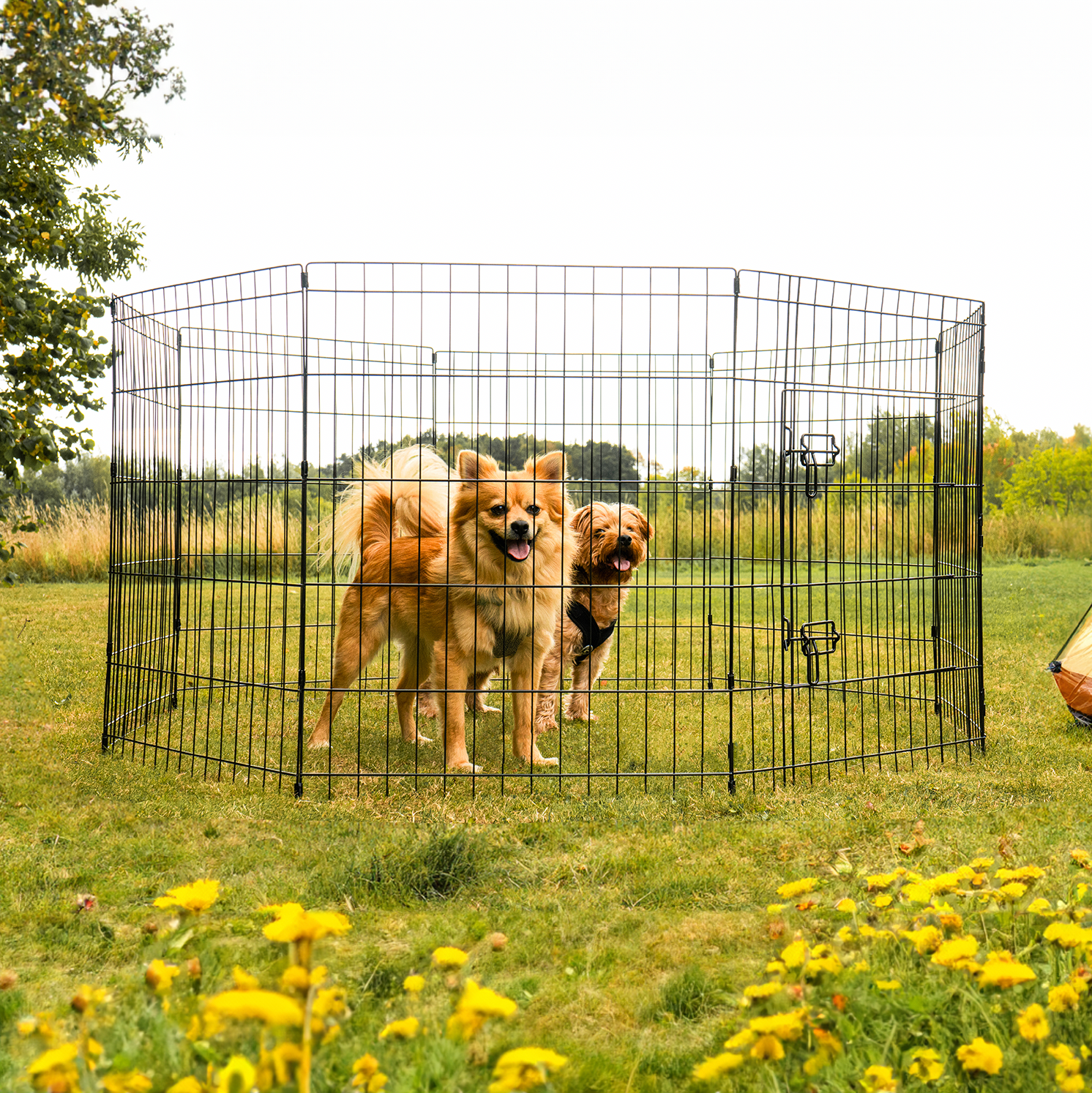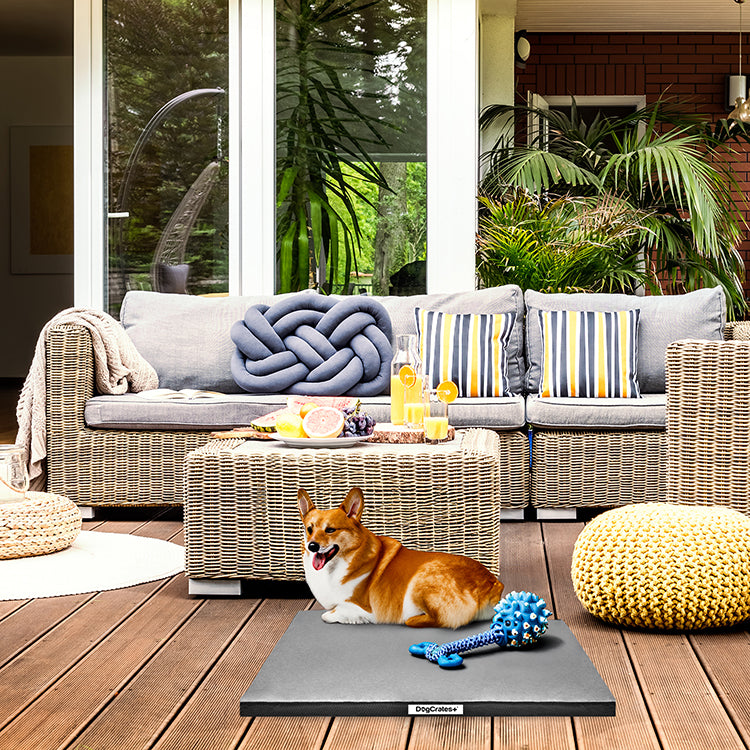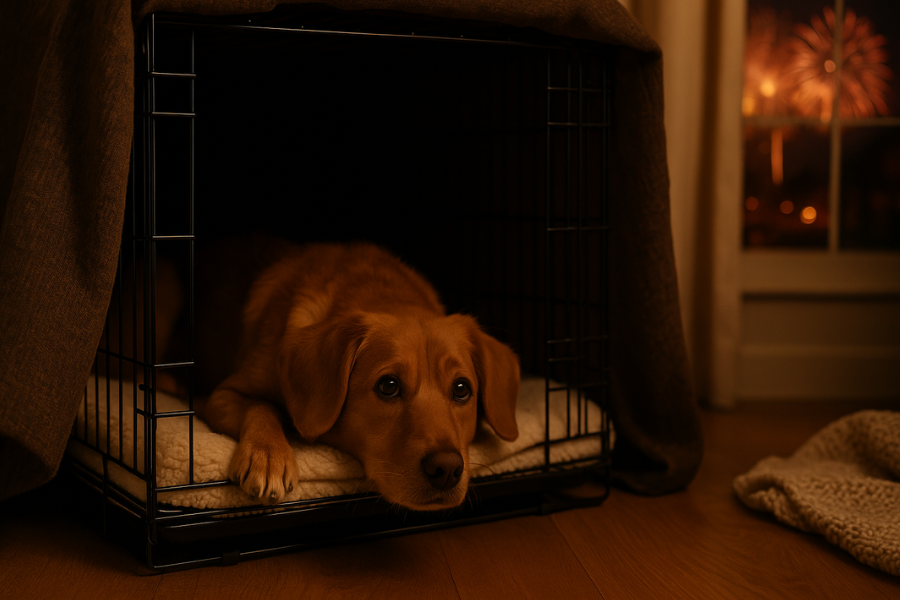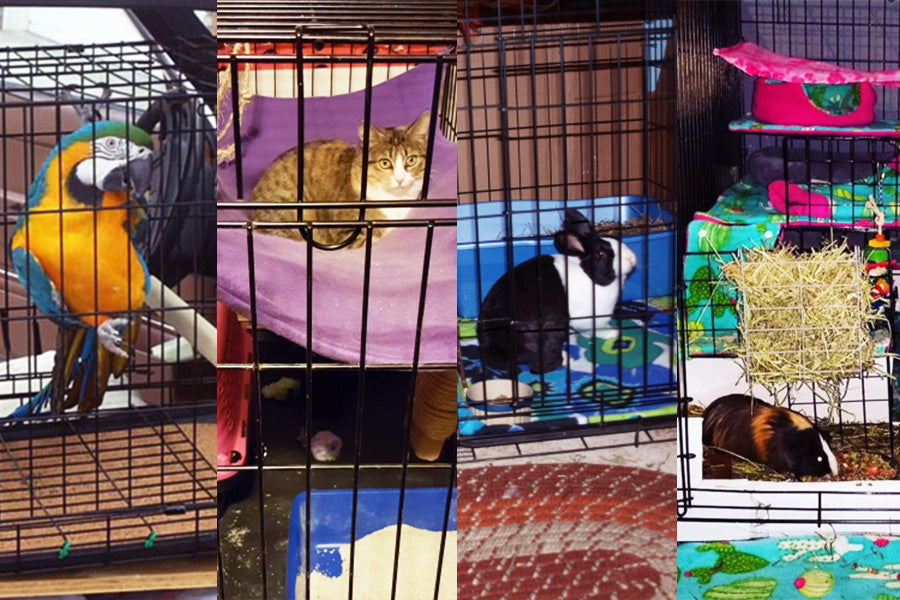Measure once, choose right, and give your dog a safe, comfortable home within your home.
The right dog crate supports training, travel, and better rest. The wrong one can cause stress or discomfort. This guide shows you how to choose the ideal size based on your dog’s measurements and breed, plus what features to prioritise in 2025 for comfort and safety.
Short on time? Browse our ready-matched Crate + Bed Bundles designed to fit each crate perfectly.

Why your dog’s size & breed matter
Dogs feel safest in a den-like space that’s big enough to stand, turn and lie down—but not so big that it reduces security. Breed influences both adult size and proportions (long-bodied, deep-chested, brachycephalic, etc.), so sizing by measurements first and then confirming with breed guidance is best practice.
How to measure your dog (takes 60 seconds)
- Length: Nose tip to base of tail (no fluff), then add 5–10 cm (2–4”).
- Height: Floor to top of head or ears (whichever is higher) when standing, then add 5–10 cm (2–4”).
- Weight: Helpful for choosing crate strength, but don’t size by weight alone.
Choose the smallest crate that comfortably fits these measurements. For a wide range of options, visit our Dog Crates Collection.
Quick dog crate size chart by breed
| Crate Size | Typical Breeds (examples) | When it fits best |
|---|---|---|
| Small – 24” | Chihuahua, Yorkshire Terrier, Shih Tzu, Pomeranian | Toy & very small companion breeds |
| Medium – 30” | Beagle, French Bulldog, Cocker Spaniel, Mini Schnauzer | Small–medium dogs with compact frames |
| Large – 36” | Border Collie, English Bulldog, Springer Spaniel, Staffy | Athletic mediums and lighter large breeds |
| XL – 42” | Labrador, Golden Retriever, Boxer, Husky | Popular large family breeds |
| XXL – 46” | Great Dane, Mastiff, St. Bernard | Giant breeds needing extra length & stability |
Note: Always confirm with your measurements—breed lists are guides, not rules.
What to look for in a crate (2025 checklist)
- Size: Big enough to stand, turn, and lie flat. Use a measure-first approach.
-
Material:
- Wire: Best airflow and visibility for most homes.
- Heavy-duty metal: Extra strength for larger or determined chewers like our Foldable Dog Crate.
- Portability: Fold-flat, lightweight frames for travel or moving around the house.
- Safety: Rounded corners, secure latches, chew-resistant tray, non-toxic finishes.
- Doors & layout: Two-door access makes positioning easier in tight spaces.
- Tray quality: Non-chew, removable tray simplifies cleaning and protects paws.
Why choose a Crate + Bed bundle
- Comfort: A fitted bed prevents bunching and drafts, encouraging relaxation.
- Convenience: One purchase, perfect fit—no measuring guesswork.
- Value: Bundles typically cost less than buying items separately.
Explore our matched sets here: Crate + Bed Bundles or browse all Dog Crates.
Pro tips for crate success
- Introduce the crate positively—treats, praise, and short sessions build calm associations. Download our Free Digital Dog Training Guide for step-by-step help.
- Keep bedding breathable year-round; see our Crate Bedding range for comfort in all seasons.
- Place the crate in a quiet corner where your dog still feels part of the family.
- For puppies, use scheduled naps and overnight routines; gradually extend duration.
FAQs
Should a crate be bigger than my dog?
Yes, but only by a little—enough to comfortably stand, turn and lie down. Oversized crates can reduce the den-like security dogs prefer.
Can I size by weight alone?
No. Weight helps choose sturdiness, but length and height determine the correct crate dimensions.
Is a two-door crate worth it?
For most homes, yes. Two doors improve access and make room placement easier.
What’s the benefit of a fitted bed?
It prevents bunching, reduces drafts, and encourages dogs to settle—key for training and better sleep.


